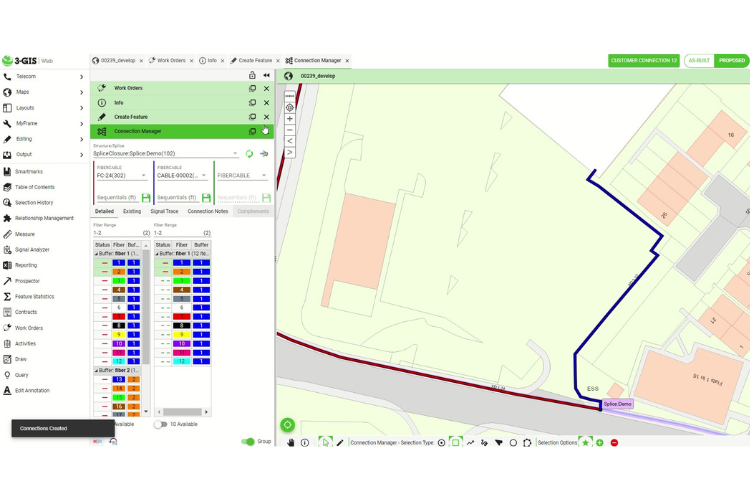Fiber networks are the future for utility companies and co-ops to bring new services to their market. Getting these networks deployed with accurate data to successfully avoid costly deployment roadblocks that could lead to insufficient reports, time loss, and operational frustrations is key to bringing network services to their customers faster and achieving better business operating results. So, what are the possible problems and obstructions utilities could encounter? And what tools are available to help prevent them from disrupting their deployment efforts?
Fiber deployment route
Determining the best route to deploy a new fiber network is the first hurdle utility companies will have to overcome. Building in an inefficient manner risks the additional costs and service capabilities of the new network. Utilities who want to maximize their return on investment should look to implement automation and machine learning in their fiber network planning phase.
A solution that provides the ability to automatically run a least-cost route is crucial. An added bonus would be a system that utilizes existing network infrastructure and right of ways in the route planning algorithm to further decrease cost of design and construction. Adding automation and machine learning to this phase of new network deployment will also allow utility companies to vastly increase the scale of production without increasing staff, further decreasing deployment costs.
Inaccurate records
Traditional methods of fiber construction and asset management offer little to no solution for easy field data gathering and integration. Crews often update field data on paper records or even simply in their heads, and rarely does that data get completely and accurately posted into the main management system to ensure customer service records are maintained properly to promote efficient operations.
To prevent inaccurate and incomplete data gathering during fiber deployment, utility companies should look for a solution that provides a mobile tool which seamlessly integrates field-collected data into the main system. By allowing field crews to create and record new features, update equipment information, attach pictures, redline documents, and more directly from the field, utilities will have access to up-to-date and accurate data records, allowing them to ensure projects are staying on budget and on time.
Excess network capacity
After the network buildout and customer activation phases are complete, utility companies may have additional network assets that are not being utilized. Not taking advantage of these available assets could reduce revenue growth potential. If utilities want to lease unused fiber to other service providers, they need to be able to easily pull reports on which strands are used and which are dark.
In addition to a solution that allows them to easily locate dark fiber, utility companies should seek a system that can easily maintain contract records in order to most efficiently keep up with current agreements. By keeping contract management and outside plant asset management operations in one system, utilities can easily reap benefits of streamlined business operations.
Separate systems
When operating multiple networks, most companies have had to operate separate systems specialized for each network. Companies have been forced to choose between complicated API integration and maintenance to be able to see multiple networks in one system, or continually jumping back and forth between management systems to get a full view of their entire network, yet either option has led to inefficient business operations.
To avoid the frustration and time loss, utilities and co-ops breaking into the fiber network market should seek out a system that can document many network types in one solution, allowing them to see all of their network assets in one window.
Want to learn more about fiber in the utility market? Listen to the Collaboration for Deploying Fiber Networks episode of our Fiberside Chat podcast to discover some advantages utilities and co-ops can capitalize on during fiber deployment, and to learn how to overcome some of the potential challenges.



